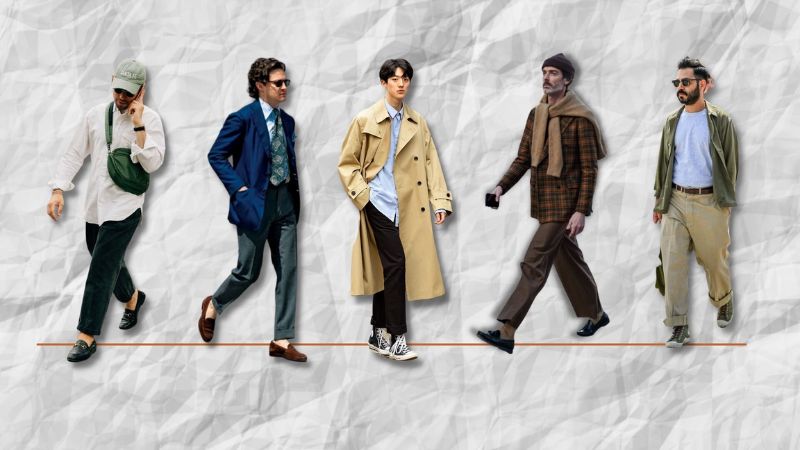Blog
How to Find Your Style: Discovering Your Unique Fashion Identity
Finding your personal style can feel like a journey of self-discovery. Your style is more than just the clothes you wear; it’s an expression of who you are. Whether you’re seeking a confidence boost, a way to feel more comfortable in your own skin, or a way to save time on clothing choices, developing a personal style that resonates with you can be transformative. In this comprehensive guide, boldali.xyz will take you through every step on how to find your style—from understanding your preferences to building a wardrobe you love.
How to Find Your Style
Having a personal style brings several benefits. It helps streamline your wardrobe, makes shopping easier, and gives you confidence in how you present yourself. Style is also a form of self-expression. When you wear something that truly represents you, you feel more comfortable, confident, and authentic.
Step 1: Explore Your Style Inspirations
The first step in finding your style is to gather inspiration. This can come from a variety of sources:
Use Pinterest and Instagram
Platforms like Pinterest and Instagram are treasure troves for fashion inspiration. Search for terms like “street style”, “vintage fashion”, or “minimalist outfits”. Save images that resonate with you, and pay attention to patterns. Are there colors, fabrics, or outfit types that you seem drawn to repeatedly?
Follow Style Icons
Identify people whose style you admire. Whether it’s a celebrity, influencer, or even a friend, consider what you love about their outfits. Is it their effortless layering? Their bold use of color? Their vintage vibe? Following style icons can give you insight into what appeals to you and why.
Observe Real-Life Inspiration
Keep an eye on outfits you see in real life. Take mental notes of what catches your attention on the street, in cafes, or at events. If you find yourself admiring a particular look, ask yourself what elements of it you might incorporate into your wardrobe.
Step 2: Identify Your Style Preferences and Personality
Once you’ve gathered inspiration, analyze it to see if any themes emerge. Here are some common style types to help you get started:
Common Style Archetypes
- Classic: Timeless pieces, neutral colors, structured silhouettes.
- Bohemian: Flowing fabrics, earthy colors, eclectic patterns.
- Minimalist: Clean lines, simple designs, monochrome or neutral palettes.
- Edgy: Dark colors, leather, bold accessories, and a bit of attitude.
- Vintage: Retro-inspired pieces from specific eras, unique and nostalgic.
Consider if any of these archetypes resonate with you. However, remember that style doesn’t have to fit into a specific box—many people are drawn to a mix of styles, which brings us to the next point.
Embrace Your Personality
Ask yourself what makes you feel most you. Are you energetic and bold? Quiet and reserved? Romantic or adventurous? Your personality can be an important guide in finding a style that feels authentic. For instance, if you have a vibrant personality, you might lean toward bright colors and bold patterns. If you’re more introverted, minimalist pieces or earth tones may resonate with you.
Step 3: Consider Your Lifestyle and Needs
Your style should suit not only your personality but also your lifestyle. A personal style that doesn’t align with your day-to-day life may feel impractical.
Assess Your Daily Activities
Think about your daily routine. Do you work in a formal office environment? Are you a student? Are you often outdoors? Your style should match your daily needs. If you work in a creative industry, you might have more flexibility to experiment with fashion. If you’re often on the go, consider styles that are practical and comfortable.
Determine Your Style Priorities
Are comfort and functionality important to you, or do you prioritize aesthetics? If you’re style-focused, you might be open to experimenting with trends or structured pieces. If comfort is your top priority, look for high-quality, relaxed fits that are also stylish.
Step 4: Build a Foundation with Wardrobe Essentials
Having essential pieces that form the backbone of your wardrobe can simplify the process of finding your style.
Choose Versatile Basics
Consider items like a white T-shirt, jeans that fit well, a classic blazer, and a comfortable pair of shoes. These items provide a strong foundation and can be styled in various ways.
Identify Key Pieces for Your Style
Based on your style archetype, add a few pieces that define your aesthetic. If you’re going for a bohemian style, you might want a maxi dress, layered necklaces, and a fringed jacket. For a classic style, a trench coat and a black dress could be key pieces.
Prioritize Quality Over Quantity
Invest in high-quality basics that will last, even if it means buying fewer items. A well-made pair of jeans or a leather jacket, for example, can be worn with multiple outfits and adapted to various styles.
Step 5: Experiment with Outfits and Find Your Fit
The best way to discover your style is to try different looks and see what feels right.
Try Out Different Outfits
Experiment with different combinations to see what feels natural. Go outside your comfort zone to test various styles—sometimes, you’ll be surprised by what you like. Take photos of outfits you enjoy, as it can help you see what works and builds confidence.
Find the Right Fit for Your Body Type
Fit plays a significant role in how comfortable and stylish you feel. Make sure your clothes fit well and flatter your body shape. If you’re unsure, get help from a stylist or try items from brands that offer size guides based on body types.
Focus on What Feels Good
Ultimately, style is about feeling comfortable and confident. Don’t worry too much about trends or “rules.” If something makes you feel great, it’s likely a good choice for your personal style.
Step 6: Develop a Color Palette
Defining a color palette can help you build a cohesive wardrobe and make it easier to mix and match pieces.
Identify Colors You’re Drawn To
Review your inspiration board or wardrobe to see if certain colors appear often. Are you drawn to pastels, earth tones, or jewel tones? You don’t need to limit yourself to a single color scheme, but choosing a few core colors and accents can make your wardrobe more versatile.
Consider Your Skin Tone
Understanding which colors flatter your skin tone can enhance your style. For example, warmer skin tones may look great in earth tones and warm hues, while cooler skin tones might suit jewel tones or pastels.
Step 7: Accessorize to Enhance Your Style
Accessories play an essential role in defining your style. They can take an outfit from basic to bold with just a few items.
Choose Signature Pieces
Whether it’s a bold statement necklace, a pair of classic sunglasses, or a vintage scarf, having signature accessories can elevate your outfits and add a personal touch.
Invest in Timeless Accessories
High-quality accessories such as a leather handbag, a good pair of shoes, or a classic watch can enhance your look and give you a polished appearance. These timeless items can complement various outfits and add a sophisticated touch.
Play with Trends
Accessories are a fun way to experiment with trends without overhauling your wardrobe. Try adding trendy pieces like chunky necklaces, colorful hair clips, or unique handbags to see if they suit your style.
Step 8: Shop Mindfully
Mindful shopping is key to building a cohesive wardrobe that truly represents your style.
Create a Shopping List
When you know your style, shopping becomes more intentional. Make a list of pieces that complement your wardrobe and help fill gaps. This prevents impulse purchases that may not align with your style.
Invest in Quality, Not Quantity
Prioritize quality over quantity. A few well-made pieces that fit your style and last for years are better than an overflowing closet of items you rarely wear.
Be Open to Secondhand and Sustainable Options
Secondhand shops, vintage stores, and sustainable brands offer unique pieces that can help you build a distinctive style. Shopping sustainably also reduces waste and often leads to more unique, one-of-a-kind finds.
Step 9: Refine and Evolve Your Style Over Time
Style isn’t static—it evolves with you. Embrace this as part of the process.
Assess Your Wardrobe Regularly
Every few months, review your wardrobe to see if it still aligns with your style. Remove items you no longer love or wear. This keeps your closet organized and ensures you’re left with only pieces that truly represent you.
Experiment and Adapt
Don’t be afraid to experiment with new looks or adapt your style as you grow. Your style may change based on life events, new interests, or lifestyle changes. Embrace these changes, and let your style be a reflection of who you are in the present.
Conclusion: Embrace Your Unique Style
Learning how to find your style is about discovering what makes you feel like the best version of yourself. With time, reflection, and a bit of experimentation, you can develop a personal style that not only looks great but also feels authentic. Embrace the process and remember that personal style is about self-expression—wear what makes you feel empowered and confident.



